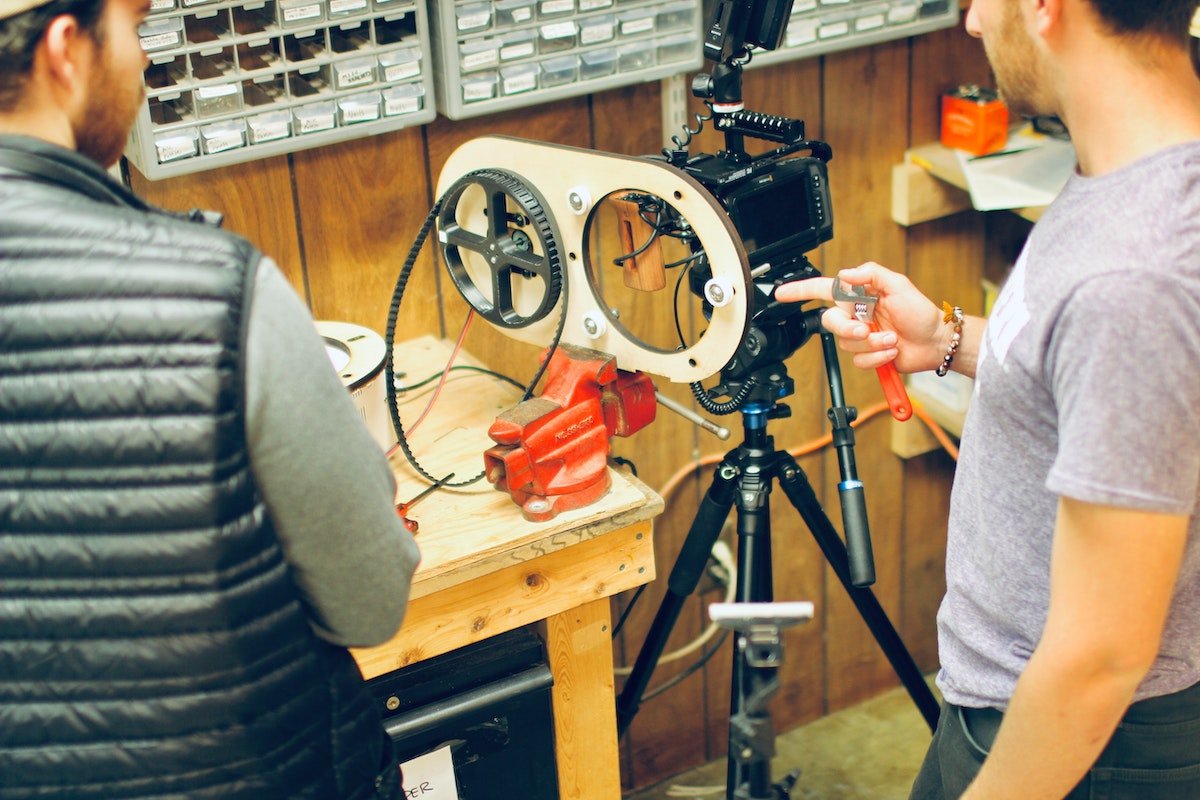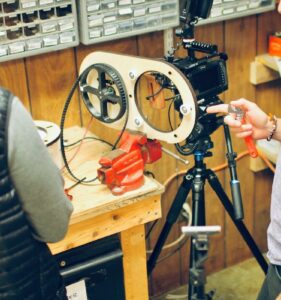As an innovator, your ultimate goal is to create a product that stands out in the market and solves the pain points of your target audience. But how can you be sure that your idea will work as intended before you invest a significant amount of time and resources into it? This is where prototyping comes into play.
Prototyping is an essential part of the innovation process that involves building a preliminary version of a product or service to test its viability and usability. The prototype allows you to identify any flaws, validate your assumptions, and make necessary changes to improve the final product. In this chapter, we will discuss the importance of prototyping, different types of prototypes, and best practices to ensure successful innovation.
Why Prototyping is Important
Prototyping is a crucial step in the innovation process for several reasons. Firstly, it allows you to visualize and test your idea in a tangible form, making it easier to communicate with stakeholders, investors, and potential customers. A prototype can convey the concept and features of the product much more effectively than a verbal or written explanation.
Secondly, prototyping helps you to identify and solve potential problems early in the product development stage. By creating a prototype, you can test the usability, functionality, and feasibility of your idea in a real-world setting. This allows you to make adjustments to the product before investing significant time and resources into it.
Lastly, prototyping encourages collaboration and creativity. When working on a prototype, you can involve different team members and stakeholders to provide feedback and suggest improvements. This collaboration can lead to innovative solutions and ideas that you may not have thought of otherwise.
Types of Prototypes
There are different types of prototypes that you can create depending on your goals, budget, and timeline. Here are some of the most common types of prototypes:
Conceptual Prototype
A conceptual prototype is a preliminary version of a product that aims to demonstrate the overall concept and design. This type of prototype is usually made using simple materials such as cardboard, paper, or foam. It does not have all the features of the final product but serves as a visual aid to communicate the idea.
Functional Prototype
A functional prototype is a more advanced version of a product that has basic functionality. It is used to test the product’s features and functionality in a real-world setting. This type of prototype is often made using electronic components, sensors, and software.
Visual Prototype
A visual prototype is a digital or physical representation of a product that focuses on its aesthetic design. This type of prototype is used to test the product’s appearance, style, and user interface. Visual prototypes are often made using computer-aided design (CAD) software or 3D printing.
User Experience (UX) Prototype
A UX prototype is a type of functional prototype that focuses on the user experience of the product. It is used to test the product’s usability, navigation, and overall user experience. UX prototypes are often made using interactive software such as Adobe XD or Sketch.
Best Practices for Prototyping
To ensure successful prototyping, here are some best practices to follow:
Define Your Goals
Before creating a prototype, define your goals and what you want to achieve from the prototype. This will help you to create a prototype that is aligned with your objectives and meets the needs of your target audience.
Start Small
When creating a prototype, start small and focus on the core features of the product. This will help you to test the basic functionality of the product and identify any issues that need to be addressed.
Test Early and Often
Test your prototype early and often throughout the product development process. This will help you to identify any problems and make necessary adjustments before investing significant resources into the product.
Involve Your Target Audience
When testing your prototype, involve your target audience and collect feedback from them. This will help you to understand their needs and preferences, and make necessary changes to the product to meet their expectations.
Use Appropriate Tools and Materials
Choose the appropriate tools and materials to create your prototype based on your goals, budget, and timeline. There are various prototyping tools and software available that can help you create prototypes quickly and efficiently.
Document Your Process
Document your prototyping process to track your progress, identify any issues, and make necessary adjustments. This will help you to improve the prototyping process in the future and ensure successful product development.
Conclusion
Prototyping is a powerful tool that can help you to create successful products that meet the needs of your target audience. By creating a prototype, you can test your idea in a tangible form, identify any flaws, and make necessary adjustments before investing significant resources into the product. There are different types of prototypes that you can create depending on your goals, budget, and timeline, and following best practices can help you to ensure successful innovation. With the right approach and tools, prototyping can help you to elevate your innovation game and create products that stand out in the market.
The relationship between prototyping and MVP
Prototyping and Minimum Viable Product (MVP) are two essential concepts in the product development process that share a close relationship. Both are used to validate ideas and test the viability of a product before investing significant time and resources into it.
Prototyping is an early stage of product development that involves creating a preliminary version of a product to test its usability and functionality. It is often used to validate ideas and communicate concepts to stakeholders. On the other hand, an MVP is a functional version of the product that has only the essential features necessary to solve the customer’s problem. It is used to test the product in the market and gather feedback from early adopters.
The primary difference between prototyping and MVP is the level of functionality. A prototype may not have all the features of the final product and may not be functional, while an MVP is a working product that solves the customer’s problem. However, both serve the same purpose of validating ideas and testing the product’s viability before investing significant resources.
Prototyping can be used to create a visual representation of the product, test the usability and functionality, and identify any flaws or areas of improvement. This feedback can then be used to create an MVP that has the essential features necessary to solve the customer’s problem. The MVP can then be tested in the market to gather feedback and validate assumptions.
The pros and cons of prototyping for small businesses
Prototyping is a powerful tool for small businesses that can help them to create successful products and stand out in the market. However, like any tool, prototyping has its pros and cons that small businesses need to consider before incorporating it into their product development process.
Pros of Prototyping for Small Businesses
- Validation of Ideas: Prototyping allows small businesses to validate their ideas and test the viability of a product before investing significant resources into it. This can help to reduce the risk of failure and ensure that the product meets the needs of the target audience.
- Cost-Effective: Prototyping is often less expensive than creating a fully functional product. This can be especially beneficial for small businesses with limited budgets as it allows them to test their ideas without investing significant financial resources.
- Collaboration: Prototyping encourages collaboration and creativity among team members and stakeholders. By involving different perspectives, small businesses can create innovative solutions and ideas that may not have been possible without collaboration.
- Customer Feedback: Prototyping allows small businesses to gather feedback from potential customers and make necessary adjustments to the product before launching it in the market. This can help to ensure that the product meets the needs of the target audience and is well received in the market.
Cons of Prototyping for Small Businesses
- Time-Consuming: Prototyping can be time-consuming, especially if the small business does not have the necessary resources or expertise to create the prototype. This can delay the product development process and impact the time to market.
- Limited Functionality: A prototype may not have all the features of the final product, which can make it difficult to test the full functionality of the product. This can result in the small business making assumptions that may not be accurate and can impact the success of the product.
- Over-Reliance on Prototyping: Small businesses may become overly reliant on prototyping and may spend too much time perfecting the prototype rather than focusing on creating a fully functional product. This can delay the time to market and impact the success of the product.
- Intellectual Property Concerns: Small businesses need to be careful when creating prototypes as it may expose their intellectual property to potential competitors. This can be a significant concern, especially for small businesses with innovative ideas that are not yet patented or trademarked.
In conclusion, prototyping can be a powerful tool for small businesses, but it is essential to consider the pros and cons before incorporating it into the product development process. By weighing the advantages and disadvantages, small businesses can use prototyping effectively and create successful products that meet the needs of their target audience.


